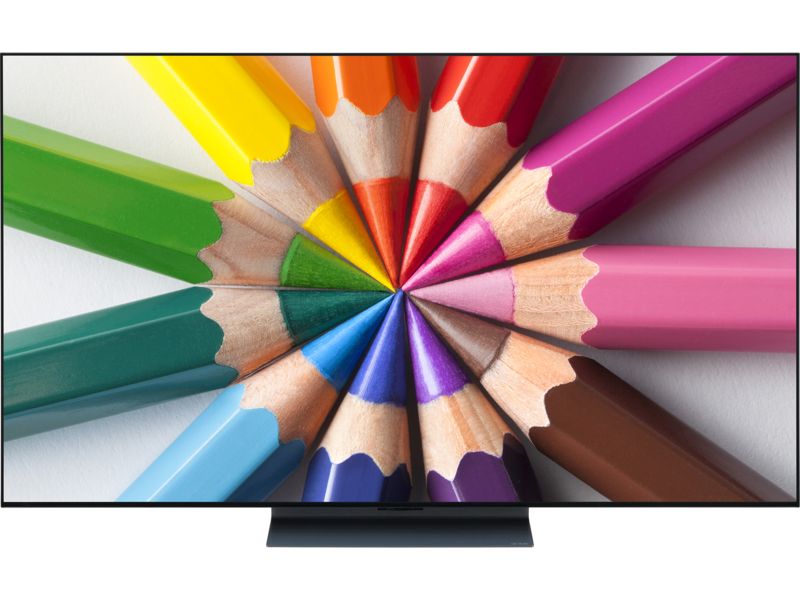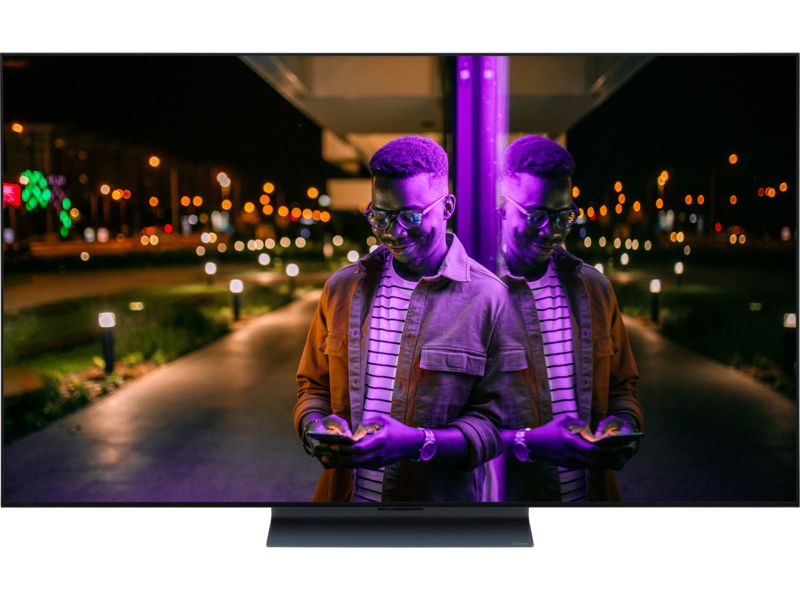What is OLED TV? The best OLED TVs to buy

Organic light-emitting diode (OLED) TVs can give you dazzling pictures with smooth motion, deep blacks and vibrant colours, while also being slimmer than LED-backlit LCD TVs.
Many of the leading TV brands are developing OLED sets, including LG, Panasonic and Sony, and prices are becoming far more affordable. LG is the most prolific in this area, releasing around five ranges each year. Sony and Panasonic don't release quite as many, but as the displays get cheaper we expect to see more and more.
Smaller brands, such as Philips, are also getting in on the OLED action. And, after holding out for several years, even Samsung decided to start making OLED TVs in 2022.
Best TVs for 2024 Discover the Best Buy models that aced our lab tests
What’s so special about an OLED TV?
OLED TVs have individual organic cells behind the screen, which produce their own light source, unlike standard LED-backlit TVs. This has a number of advantages for picture quality and design:
- Deep blacks OLED sets are able to turn off individual LEDs when displaying black, rather than simply directing light away from that part of the screen, as LCD displays do, which means they can achieve very deep blacks.
- Smooth motion Movement looks good on OLED TVs, with hardly any blurring, even on fast-moving action.
- Super-thin screen With no need for a backlight, OLED screens can be even thinner than most smartphones.
There are some drawbacks, however. Having a layer of bulbs shining onto a colour-producing layer understandably means backlit TVs tend to be brighter than OLEDs. However, in our testing we don't usually find that OLEDs are dim.
Browse our OLED TV reviews to find out which models deserve a place in your home.
Which is better, OLED or QLED and LCD?
The fundamental difference between OLED and LCD (and QLED) TVs is the backlight. OLEDs don't have one, but LCD (also called LED) TVs do.
Otherwise, OLEDs are broadly the same as every other screen type, including LCD and QLED. An OLED TV won't necessarily have extra features, but they can support the same HDR formats and are usually 4K (there are even some 8K models).
If you're looking at an OLED TV and similarly high-end LCD or QLED model, they are likely to have similar features – the only difference is how the picture is produced. The pixels in an OLED display create light and colour, while LCD TVs have a backlight shining onto a colour-producing layer to create a picture.
OLED TVs often excel, but it's not a guarantee of quality. A brand still has to use the technology to get the most out of it, and they can absolutely be bested by QLED and LCD models.
What is OLED evo?

LG introduced OLED evo into its G range in 2021. It was the first major update of OLED technology since it became compatible with HDR, and it focuses on brightness.
Backlit TVs have the advantage here, since there's an entire layer of bulbs shining on the colour-creating layer to make the picture. OLED evo screens have adapted the way the pixels produce light to increase the peak brightness.
In 2022 it added OLED evo technology into its C range OLEDs. LG also makes an A and B range, both of which are cheaper than C and G range OLEDs, so hopefully the evo technology will transition to these ranges.
What is QDOLED?
In 2022, Samsung finally made an OLED TV, but it's not exactly the same as those made by everyone else. Samsung combined OLED tech with its quantum dots (the 'QD' in QDOLED) that are usually found in its QLED TVs.
It did this to improve colours and increase brightness, which is an area where OLEDs traditionally struggle versus backlit TVs, because pushing too much light from the diodes risked burn-in.
42-inch OLEDs and other available sizes
Unlike LCD and QLED TVs, your size options with OLED are more limited.
When OLED TVs became mainstream, there was nothing smaller than 55 inches, but in 2019 LG and Sony launched 48-inch OLED TVs. These were the smallest available, but 42-inch ones are now available, too.
4K TVs don't get smaller than 40 inches, so we're unlikely to see OLED TVs shrink down again.
Do you need to worry about screen burn?
The prospect of screen burn is a worry. It's where a still image remains on the screen even when you change the channel, like looking through a window with a smudge on it.
Once an image is burnt on, it's difficult, if not impossible, to remove without replacing the screen. It can happen, but it's easy to avoid.
OLED TVs tend to have a feature that imperceptibly moves still images, such as a channel logo, so they don't burn onto the screen.
Some OLEDs also have a sort of screen refresher software that's like giving the screen a wash to remove any hint of an old image. This usually happens automatically after the TV has been left on standby for a few minutes, but you can trigger the process manually in the settings.
You can also avoid this issue happening by not leaving your TV on pause for too long.
Ultimately, this is a rare occurrence that only really happens when the screen has been paused on the same image for hours. Avoid this and you should be fine.

What about my warranty?
Frustratingly, manufacturer warranties don't tend to cover screen burn because it's considered misuse. Manufacturers claim that under normal use, ie not leaving it paused for hours on end, screen burn shouldn't occur.
It may be covered by your retailer warranty, though, so it's worth checking with whoever you bought the TV from to see if screen burn is covered.
With OLED TVs available in more sizes than ever, use our TV sizing guide to see which is best for your living room
Should I buy an OLED TV?
Unlike 4K and HDR, which should now be seen as a requirement for your next major TV purchase, OLED isn't.
It used to be something of a luxury option. However, LG continues to push the prices down, with some A range models available for £700 and sometimes less, so it's a far cry from the average £1,500 price tag of just a few years ago.
An OLED still costs more than some LCD TVs, though, and you’re not guaranteed a Best Buy. The wealth of healthy competition from Hisense, Panasonic, Philips, Samsung and Sony should help to keep driving prices down.



